Having to be back in Seattle before the Hill Country Extension to VENT’s South Texas Tour would end, after our goodbyes at the Laredo Airport, I headed north on my own. It was 180 miles from Laredo to where I would be staying the next two nights – The Lodge at Lost Maples and another 8 miles from there to the Lost Maples State Natural Area – my ultimate destination to look for two new ABA Life Birds – the Golden Cheeked Warbler and the Black Capped Vireo. I also hoped to photograph a Scott’s Oriole, a bird that had eluded me in Arizona.
Even on two lane country roads, the speed limits in Texas are often 65 to 70 miles per hour and on the Freeways can be as high as 75. My kind of place for driving at least. It was not long before I was literally the only car on the road and there were stretches of 30 miles or more where I did not see another car – in any direction. With a few stops for lunch, provisioning and birds – the same that had been seen all through the tour but I had to be sure – I made it to my cabin a little after 4 o’clock. After 10 nights in motel rooms this seemed like luxury and definitely peaceful and charming. (An aside: Once again I am beginning the process of online dating and made a few connections before I left for this trip. Possibly a few moments of the tour would have appealed to some of the women I had communicated with, but probably not many. I thought immediately that this place would – just a very comfortable and relaxing place.)
My Road

My Cabin

The check-in process was simple. Open the door and walk in. The key was waiting for me on the table. There was zero reception of any kind. No cell service, no phone, no cable, no TV, not internet, no Wi-Fi and nobody else around. I put my meager food supplies in the fridge, my suitcase on a table and headed off. I did not even bother to lock the door.
After the rather flat and boring landscapes of the past ten days, it was nice to be in the rolling hills and forest of the acclaimed Texas Hill Country. Many people had told me that they loved this area and found it quite beautiful. Being spoiled by Puget Sound, the Olympics, the Cascades and Mount Rainier, I was less enthralled but can certainly imagine it as much lovelier with the colors of fall as the maples changed colors. Certainly a welcome and comparatively beautiful retreat from the monotony of the south.
I headed to the Lost Maples Natural Area figuring I would at least scope it out for an all out assault the next day. I arrived just as the visitor center was closing. A nice quick conversation with one of the staff produced a map and a couple of ideas of where to look for my target birds. The Golden Cheeked Warbler was not too far away, but the Black Caped Vireo was a long steep hike. I decided to go to the parking area that began the trail system and to at least look at what was ahead. When I got there a birder with bins and a small camera was getting into his car. It turns out that he was a local part time guide and he was doing some scouting for trips the next week. He was friendly and helpful – as everyone I met in Texas had been. He was recovering from some leg/hip condition that did not enable him to make the steep climb to the best place for the Vireos but he said that just a short while ago he had the Warbler not too far down the trail. There was definitely time for a try, so I thanked him and set off.
I have probably written before that while I have fairly good hearing, my processor is terrible. Often even if I had just had a call or song identified a few minutes earlier, I just cannot sort out what is what. I listened to my recordings of the calls and songs of the Golden Cheeked Warbler as I started on the trail. The song was fairly distinct, but the chip note did not sound to me that much different than many others. At least I knew it chipped.
The trail was easy through somewhat of a ravine with mixed woods on both sides. Not open, not dense, not high, not low. Less than 300 yards down the trail, the first bird sound I heard was a high pitched “chip”. Somehow, I actually processed it immediately as the Golden Winged Warbler. I quickly gave an imitation of the song and apparently it was good enough as there was a response and I got a quick glimpse of my first ever and quite beautiful Golden Cheeked Warbler. This was a new ABA Life bird and now I really wanted a photo. I called again and the warbler responded boldly singing from a number of branches not too high up and often in the open. Snap, snap, snap – I had my photo – far better than I had ever anticipated and much easier.
Golden Cheeked Warbler Singing

There probably was nobody within a mile of me. Just me and my new best friend the Golden Cheeked Warbler. I gave out a victory cheer as I was very elated. The Warbler didn’t mind and posed for another shot.
Golden Cheeked Warbler

There was no time for the climb to look for the Vireo and ending on a high note is always good so I headed back to my cabin on the lane in the woods.
I had not explored my new home area before taking off earlier. Now I had a chance to look around a bit. A bird was sitting on the fence line singing – an Eastern Phoebe – new for the trip and new for the year. A couple of Cardinals whistled and a Golden Fronted Woodpecker was drumming. I thought I heard a Woodhouse’s Scrubjay but I could not find it.
Eastern Phoebe

It was getting late and although my meal was not going to be exciting – I enjoyed the solitude and a simple salad with Lemon Pepper chicken. In anticipation of finding my target birds I had bought a small piece of cake. I expected it would be eaten the next evening. Since I had found the Warbler but not yet found the Vireo, I ate only half.
It was blissfully quiet at night. I went over some of the pictures I had taken during the tour – discarding at least 500. I had done this most of the previous nights as well and am sure that I had deleted at least 2000 pictures. I would need to delete many thousand more when I got back home.
As usual I woke up early. It was so quiet that I could hear some birds from behind the cabin. One call was the incessant two note call of the Eastern Phoebe, but there was something else far more interesting. I opened the back door and walked out. It was a Chuck Will’s Widow – its song repeating its name over and over. I grabbed my phone and tried to call it in closer with playback but it did not move. It would have been too dark for a photo anyhow but what a cool experience.
Time to head back to Lost Maples. This time I got there just as the Visitor Center was opening. I got a bird list (fancy with photos of the birds seen) and some more advice on getting to the Vireos. I was also told that the camp host in the first campground had a feeder up and might have some insights and also that the Bird Host for the area was in a trailer down by the maintenance area. He would not be leading a bird walk that day, but he was very knowledgeable about what was being seen.
As I pulled up to the Bird Host area, the hosts were out restocking peanut butter and seeds into the feeder. Lee confirmed that the Vireos required a steep hike but he said I might as well go up the East trail as opposed to the directions I had been given at the Visitor Center which would have been an even longer and almost as steep a hike. He also said that a Scott’s Oriole often visited his feeders and I should check back later.
My get-in-shape and lose some weight program of February/March had been severely challenged by the giant meals twice a day during the tour. Even though I had tried to scale back, I was sure I had gained at least 5 pounds. Carrying my bins, camera and heavy lens plus the pack with water and food, I was not looking forward to what really was going to be a steep climb – and was warned about as such in the literature and on the map. It indeed was challenging – quite steep for over a mile, but with several breaks, I handled it better than I thought I might and got “on top” and went to Primitive Camping Area B with great views and lots of habitat that looked good. I am not sure why it is called a camping area as there are no facilities or campsites. It did not matter – I had been alone on the trail and was definitely alone on the top.
The Bird Host had reminded me to check out every apparent Turkey Vulture because the somewhat similar appearing (in flight) Zone Tailed Hawks were present. I must have checked two dozen vultures on the way up. At the top one indeed turned into a Zone Tailed Hawk.
Zone Tailed Hawk

It was a BIG area and I hiked around for almost an hour looking for the Vireos. I played songs, call notes and everything I could think of – and had nothing, It was pretty overcast and still chilly and pretty windy so I hoped that maybe it would just have to warm up. I then tried another area out of Area B. A flash of blue caught my eye and then another. I tracked one bird down and was rewarded with a beautiful singing Blue Grosbeak. Probably my best picture of one and definitely making up for the poor view and no photo of the single bird we had seen near the end of the tour.
Blue Grosbeak

I admit I was getting a bit worried as the bird activity was pretty light, but I reasoned that I had invested a lot to get up to this area so I had to give Area B another try. I understood that the Vireos favor a mixture of trees that included Junipers and usually foraged low in the scrub. I saw a spot I had not checked before that looked good and as I approached I first saw two birds fly in. I found one and it turned out to be a Field Sparrow, the first I had seen in quite a while, its pink bill an easy and immediately apparent field mark.
Field Sparrow

A few minutes later I heard what I thought was the Vireo’s song and saw two more birds in the same area. Over the next 10 – 15 minutes I chased the birds from one tree or scrub to another getting only momentary views to confirm the ID as a Black Capped Vireo. Just as I got my camera on one in a little opening, it was gone. This happened repeatedly. It looked to me like the two males were fighting over territory. Finally one of the birds flew off and the other proclaimed its victory in the territorial dispute by perching and singing in the open – at least briefly. I got my photos and I was a very happy birder with another ABA Life Bird and photo.
Black Capped Vireo


I don’t know if it was gravity or elation at the success, but the hike back down was sure a lot easier although great care had to be taken on loose gravel and uneven terrain. Perseverance had paid off and there had been bonuses as well. I heard and got a quick view of a several Golden Cheeked Warblers on the trail down, but did not even try for photos. The ones from the day before would be tough to beat. I got to the parking lot and drove to the feeders by the maintenance area to report back and also hoping to find a Scott’s Oriole. Lee drove up maybe 5 minutes after I set down on the picnic table to watch the feeders.
I showed him my Vireo shots and he was very pleased as he had not been up there that week and was glad that the birds were present. He said the Scott’s Oriole had come in a short while after I had left before. He also said that a Woodhouse’s Scrubjay had been visiting. Not too long afterwards, he said he was hearing the Scott’s Oriole. It came in very briefly to the feeder – too quick for a photo and then fortunately perched in a nearby tree. Finally I got my ABA Life photo. I had hoped for a photo on this tour/trip but felt it was definitely not a sure thing. This one was particularly well received because it was the seventh oriole species seen and photographed on this trip joining the Audubon’s, Hooded, Orchard, Baltimore, Altamira, and Bullock’s Orioles. Earlier this year I had seen and photographed a Streak-Backed Oriole in Arizona and last April I had seen and on April 25th last year I had seen and photographed a Spot Breasted Oriole in Florida. So within a year I had seen all of the “regularly” occurring orioles in the ABA area. There is also a Code 5 Black Vented Oriole that resides in Mexico and Central America and has made a very few appearances in Texas and Arizona – maybe some day.
Scott’s Oriole

A few moments later the Woodhouse’s Scrubjay came in to get peanut butter from one of the feeders and stayed just long enough for a photo. This species came into being when the Western Scrubjay was split into California and Woodhouse’s Scrubjay in 2016. I had seen only a single Woodhouse’s Scrubjay before – in Colorado in 2016.
Woodhouse’s Scrubjay

Lee also told me of another place where the Black Capped Vireos should be much easier to find – South Llano River State Park – out of my way to San Antonio where I would be flying out of the next day, but I had plenty of time. I had allocated this full day to Lost Maples if needed for the Golden Cheeked Warbler and Black Capped Vireo and maybe even the Scott’s Oriole. The original plan was to return the following morning for a few hours if necessary in case I had not been successful earlier. That would still have given me time to get to San Antonio for my 7 pm flight. Now my plans would change with my great fortune already. I would drive the area just to enjoy it, get some much needed sleep at the cabin and bird around there leisurely and then try South Llano River SP the next day. I figured you could never have too many good birds!!
I returned to the Visitor Center and gave them an update on the birds I had seen. They are very aware of the special appeal of the Black Capped Vireo and Golden Cheeked Warblers and like to have real time info to share with visitors. Very near the Center I had a small flock of Carolina Chickadees. These were the first ones for the trip. It seemed so odd to not have had chickadees previously as they are so common where I live (Black Capped and Chestnut Backed) and elsewhere in the Country.
Carolina Chickadee

I drove quite a few roads and stopped for coffee at the Lost Maples General Store. The first cup was free – and there was free Wi-Fi – super nice folks as well. Later I found a couple of Eastern Bluebirds on a fence line. At first I thought they were Lazuli Buntings but a bit too early still. Back at the Cabin I was treated to a very up close and personal encounter with a pair of Vermilion Flycatchers. I first noticed the drab female and then the male fluttered in and was absolutely spectacular in great light.
Vermilion Flycatcher

In the evening, I listened for owls and nighthawks but heard none. Same in the morning but again heard the nonstop call of an Eastern Phoebe. I cleaned the cabin, packed my stuff and headed off to South Llano River State Park which was just over 70 miles away. The topography at South Llano was very different from Lost Maples. Much flatter and actually a somewhat lower elevation even without the steep climb at the latter. There were a number of feeding areas and blinds pretty close to parking at South Llano and I was told that both the Golden Cheeked Warblers and the Black Capped Vireos might be found close to one of the blinds particularly the Agarita Blind.
The blinds were a very short distance from parking and were comfortable. Great for viewing but not so great for photos as much of the viewing area was behind distorting glass. Nonetheless, the birds were definitely interested in the feeders and the water drips. Although the Golden Cheeked Warblers and the Black Capped Vireos were known to come in to the water drips, I saw neither while I was there. But it was great for sparrows: Lark Sparrow, Field Sparrow, Clay Colored Sparrow (new for the trip), Chipping Sparrow, White Crowned Sparrow (new for the trip), Lincoln’s Sparrow and maybe my favorite sparrow – the Black Throated Sparrow.
Clay Colored Sparrow
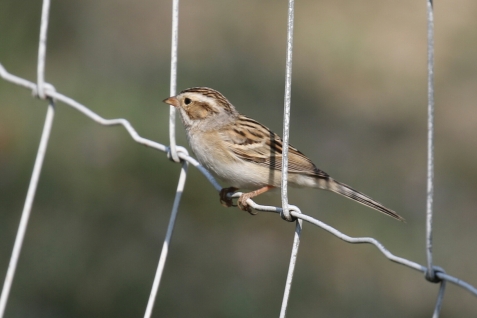
White Crowned Sparrow

Field Sparrow

Black Throated Sparrow

I was joined in the blind by a birder from Australia who lived part of the year in Texas and was familiar with the park. A somewhat rare Cassin’s Finch had been reported at the park and we were both happy when I spotted it and could point it out to her – contrasting it with the many House Finches that were present. A bird that I had seen unexpectedly at Lost Maples also came in to the feeders here – a Pine Siskin. They can be abundant in Western Washington and I somehow incorrectly had them figured as a northern bird.
Cassin’s Finch

Pine Siskin

The lady from Australia was mostly interested in finding a Black Capped Vireo and she left the blind before I did. I gave the blind a few more moments and then went out looking for Vireos and Warblers. Two flocks of Cedar Waxwings flew over but just like they had on the early part of the tour, they never landed and just kept going. At least with these I could see their crests and yellow at the tip of their tails. Not far from the blind I heard a wren like buzz that I was pretty sure was the alarm call of the Black Capped Vireo. Then I saw at least two males flitting about. There may also have been another male and a female. They darted in and out of view so quickly that it was hard to keep track.
Just as at Lost Maples, there seemed to be a territorial battle going on. I finally got one clear shot for a photo but that was it. I had called out to the other birder that I had some Vireos and she finally came over. Each time a Vireo became visible she was unfortunately looking in another direction and by the time she turned to the bird, it flew off. They were a challenge. This continued for maybe ten minutes with some moments of silence and then the raspy alarm call again and a quick view. I finally took off looking for warblers and I am not sure if she ever got on one of the Vireos.
Black Capped Vireo

These Vireos had been much much easier than at Lost Maples – no more than 200 yards from the parking and absolutely flat ground. I was only able to find a single Golden Cheeked Warbler – buried in the foliage – but I did not look very hard. I also found a couple of Yellow Rumped Warblers in full breeding plumage, a Bell’s Vireo and a Blue Gray Gnatcatcher.
To me this park was much less attractive than Lost Maples, but if someone had a primary goal of finding either the Golden Cheeked Warbler or a Black Capped Vireo, I would recommend this place as the far easier location. It is about the same distance – less than an hour and a half – from San Antonio so easily accessible.
It had been another great birding experience but it was time to go. I am sure I could have spent more time and found more birds probably even a couple of new species for the trip, but it had been a very full time and I was ready to head home where I had some friends coming in the next day. I made it to the airport very early and did some more work on photos and thought back on the many fine moments.
Recap and Looking forward
All told during my trip, I had seen 251 species bringing my Texas Life List up to 291 species. If I had noticed that earlier I would have worked at finding 9 new species to try to get to 300 – I like round numbers.
I had added 5 life birds to my ABA List – Whooping Crane, Tropical Parula, White Collared Seedeater, Golden Cheeked Warbler and Black Capped Vireo. That list now stands at 712 species.
I had added photos of 17 species to my ABA Photo Life List and now stands at 667.
I had not been thinking about it before the trip, but as I posted my bird lists to Ebird during the trip, I noticed that I had seen quite a few ABA species during the year. This was in large measure due to the Big Month I did in Washington in January, but there had been some good birds added in California and Arizona in February and March even though those trips were mostly chasing highly targeted rarities. Texas added another 147 ABA species for the year so that on April 13, I had seen 449 species.
I had and have no intention of doing an ABA Big Year for 2018 or any other year but at least as of that moment, I was #2 on the Ebird list for the year. After 4 days without any birding, I have already dropped 2 places and that will continue as there will only be limited opportunities to significantly increase the number. I guess it would be nice to reach 500 by the end of the year, but while the brief moment at the heights was fun, that is not important to me.
There are trips ahead to Boston to see my grandson and hopefully to finally get a photo of a Tufted Titmouse – hopefully in my daughter’s neighborhood. It is not a birding trip. Frank Caruso and I are going to North Carolina the first week of June primarily to go on pelagic trips. There will be new birds there but the focus will be on a few new ABA Lifers and Life Photos especially the pelagic species that are found offshore there. I may also return to San Diego for another pelagic trip there and if so will consider braving the heat to go to the Salton Sea and hopefully find a Yellow Footed Gull.
If all goes really well, I could hopefully end the year with maybe 720 or so ABA Life birds and 680-85 ABA photos. I don’t “need” to hit any of those goals. However, I like setting goals and planning adventures to pursue them, but in the end it is the adventure itself that keeps me going. There are many birds that I will always remember (aided by my photos and my blog posts) from this trip, but just as much it will be some of the places and the experiences and the people – especially the two great guides Barry Zimmer and Carlos Sanchez from VENT and of course Mr. VENT himself, Victor Emanuel. Still some birds to see or photograph in Texas so I expect I will be back – but other places to go first. Hope they are as rewarding.


































































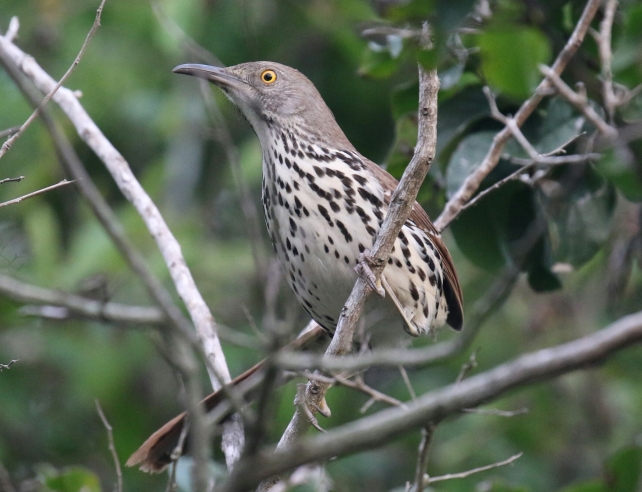
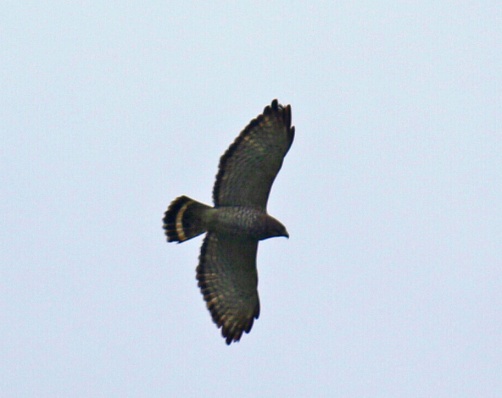










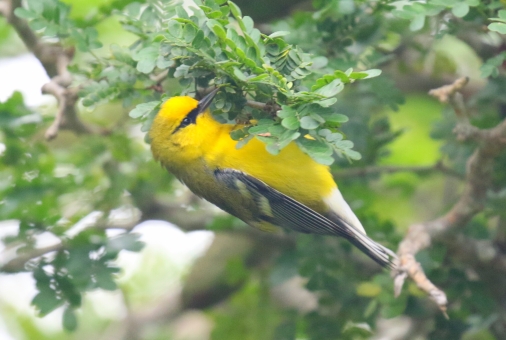



















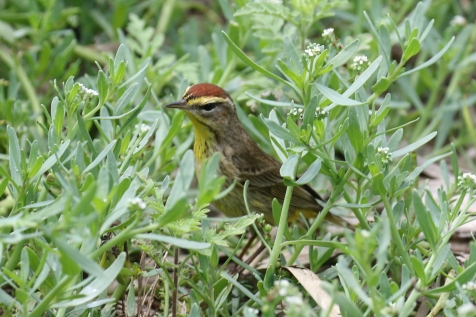















































 .
.